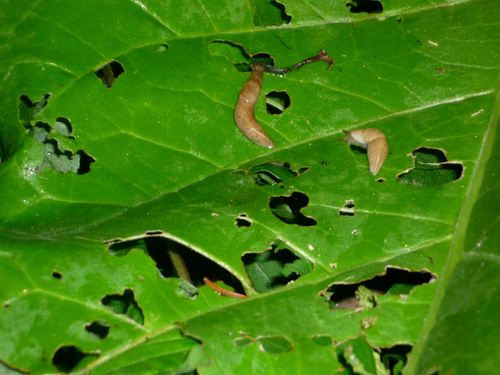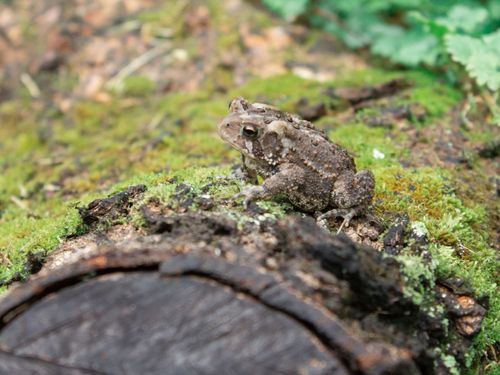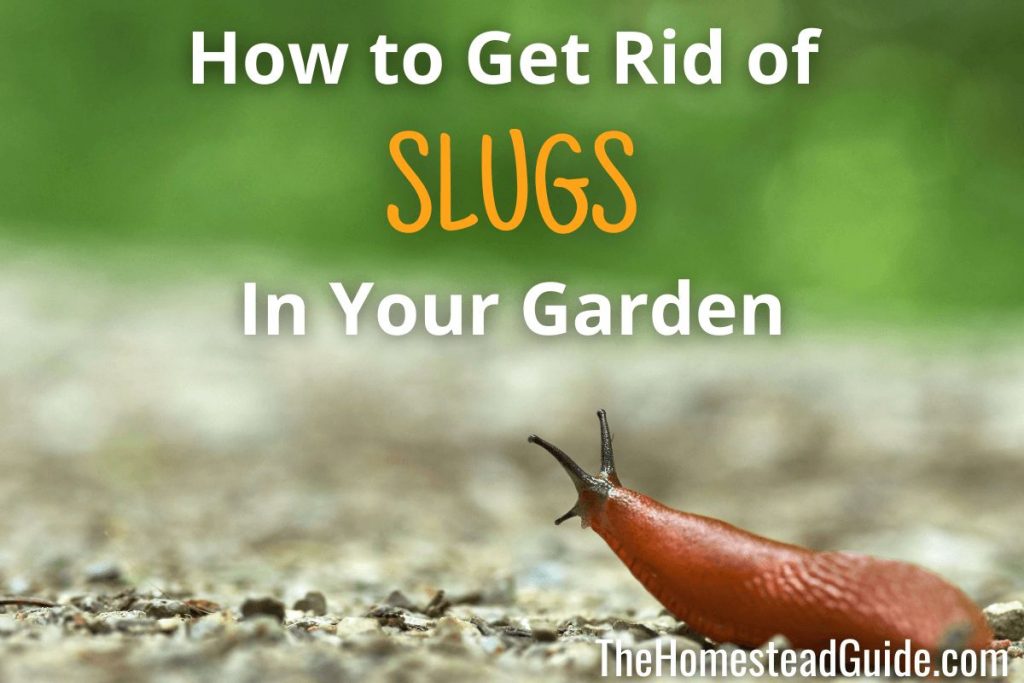Slugs can be a major nuisance in any garden, eating leaves and flowers and leaving behind big holes and slimy trails. These land-dwelling mollusks can wreak havoc on your garden and can be hard to spot – they feed at night and in the early morning, so by the time you get out to your garden, the damage may have already been done.
While there are chemical-based slug killers available, they can be harmful to plants, people and other creatures in the surrounding environment. As organic gardeners, we do not disrupt the natural ecosystem with harsh synthetic chemicals.
When you search for ways to get rid of slugs, you’ll often find a lot of useless DIY remedies and old wives’ tales. Fortunately, there are many organic methods for keeping slugs out of your garden that are safe and effective. In this article, we’ll go over five different ways to keep slugs out of your garden using organic methods that actually work.
What attracts slugs in the first place?
The number one thing that attracts slugs is a cool, damp area to live in. Since slugs do not have the protection of a shell the way snails do, they dry out a lot quicker and need to keep themselves moist at all times. This is why they prefer to feed at night and in the early morning when it’s still dark and dewy. Slugs tend to hide during the day in dark, damp places like underneath logs and planters and within dense vegetation. Have you ever squeezed past your tomato plants and felt something slimy brush against your leg? Yuck!
What does slug damage look like?
Slugs will eat basically anything, especially tender leaves and stems. Did you know that slugs and snails have jaws with thousands of tiny teeth? The teeth act like little graters that shred the plant tissue while they eat, and when they wear out, new rows of teeth just move up and replace them. Horrifyingly interesting, right?

These teeth create holes with jagged edges as opposed to the smooth edges that caterpillars create when they munch away. Slugs also create telltale shiny slime trails, which help them find their way back to their homes but may also help you find the little bugger!
Slug damage is often misdiagnosed as something else because slugs come out at night to eat and then hide away during the day. Even if you do notice slugs, let’s face it – who wants to be outside at night with a flashlight picking off those slimy things by hand? The best way to get rid of slugs in your garden is to make your garden an unpleasant place for them without affecting the rest of the environment.
How to Get Rid of Slugs and Snails Organically
1. Use these preventative gardening techniques.
First and foremost, using some of these gardening practices will help make your garden less appealing for slugs.
- Water your garden earlier rather than later: Slugs love to come out at night when the soil is cool and damp. If you water your garden in the morning rather than the afternoon or evening, this helps make sure your garden dries out by nighttime.
- Keep your garden weeded: This is always what we strive for, but it is especially important if you are having slug problems. Keeping your garden weed free helps eliminate places that slugs can shelter under during the daytime.
- Water at the base, not overhead: This helps keep the leaves dry, which can also help prevent fungal diseases and is a good overall watering practice.
2. Trap them and gather them up all at once with boards.
Slugs love hiding under flat surfaces during the day when it warms up. For a sneaky trap, lay down boards between rows in the evening and then when it warms up the next day, flip the boards over to collect the slugs and get rid of them.
3. Encourage natural predators like toads.

There are many natural predators that love to eat slugs, such as frogs, toads, snakes, birds and beetles. Toads are one of my favorite garden friends (I do love snakes too, but I know they are not everyone’s favorite) – did you know that an adult toad can feed up to 1,000 times a day? That’s pretty impressive!
For an adorable and fun project for all ages (especially kids), consider building toad houses for your garden. Check out this video for some inspiration on making a toad house from everyday items like a broken pot!
For something more elaborate and totally cute and whimsical, there are lots of decorative toad houses you can buy on Amazon like this one, or you can check out your local garden store for some more ideas!
4. Use wool pellets as a safe, non-toxic slug repellent.
Used more commonly in the UK, wool pellets are safe to use, environmentally friendly, and do not contain any chemicals like metaldehyde or iron phosphate. I will say that although iron phosphate isn’t as bad, a lot of products also contain an additional chemical, EDTA. This helps the product work more effectively, but it makes it extremely toxic to earthworms and considerably more toxic to mammals, especially dogs.
Wool pellets are exactly what the name implies: wool that has been compressed into pellet form. They can absorb a huge amount of water and will expand once you sprinkle a few around your plants. The coarse texture of the wool makes it difficult for slugs and snails to climb over. The wool pellets also act like a rich mulch, holding in moisture and suppressing weeds. They are completely biodegradable and will break down within about six months.
5. Deter them with good-quality copper tape.
This one is controversial because it is so commonly mentioned as an easy and effective solution, but the truth is that it only works sometimes and only if you use a good quality copper tape.
Tip: don’t buy copper tape designed as a “gardening” product or a slug-deterrent product. These products will more often than not be a complete waste of time and money.
You’ll often hear it repeated time after time that copper tape delivers a “small electric shock” to slugs and snails when they pass over it. This is totally unproven and is most likely just misinformation being spread around, possibly from manufacturers trying to sell their product. There is something in it that slugs don’t like, and it could be from a chemical reaction between the slime and the copper alloy causing an unpleasant taste or smell. I don’t know the exact reasoning, but I am more likely to believe the latter rather than the former.
Now on to the important part: if you really want this to work, you need to get quality copper tape with a high percentage of copper alloy and it must be wide enough, too – at least 4cm is recommended. You can overlap the tape to make this happen. Don’t bother with thin strips or copper wire because that just simply won’t work.
I’d recommend going with a good quality copper shielding tape meant for electric guitars like this one.
This is a really interesting article where they experimented with various brands of copper tape and found that some brands worked well and some did not work at all. Definitely worth a read!
What We DON’T Recommend:
- Diatomaceous earth: A lot of gardeners believe that circling their plants with diatomaceous earth is an effective slug control measure due to the microscopic sharp edges on the particles. I find this to be a waste of time and money, because as soon as you water your garden or it rains, you’ll have to reapply it. If you have a large garden, it’s just way too much work and isn’t proven to be effective anyway.
- Crushed eggshells or coffee grounds: This is another claim similar to diatomaceous earth – that sprinkling crushed eggshells, coffee grounds or other sharp materials will deter slugs. For one, you’ll need a LOT of eggshells and coffee grounds to even attempt this, and two, slugs are able to easily glide over sharp materials due to their thick layer of slime. This is another method that I would not recommend.
- Beer traps: While this does somewhat work to attract and drown slugs, I wouldn’t personally recommend using beer traps. It is true that slugs are attracted to the yeast in the beer and you may be able to drown a few, but a lot of the time, they can dip in for a drink and get out. It’s also really gross and you’ll have to deal with nasty, bloated slug corpses and refill your trap every day. My main problem with this is that you can also drown other small creatures that fall into the trap. In my opinion, it is just not worth it to use beer traps.
Conclusion
Slug control can be a daunting task, but it doesn’t have to be. These five organic methods are all effective and environmentally friendly. Have you had success with any of these techniques? Let us know in the comments below. And if you’ve got your own favorite slug-fighting method, we want to hear about that, too!
If you’re new to gardening, be sure to check out our complete guide to organic gardening for more gardening tips and tricks.

